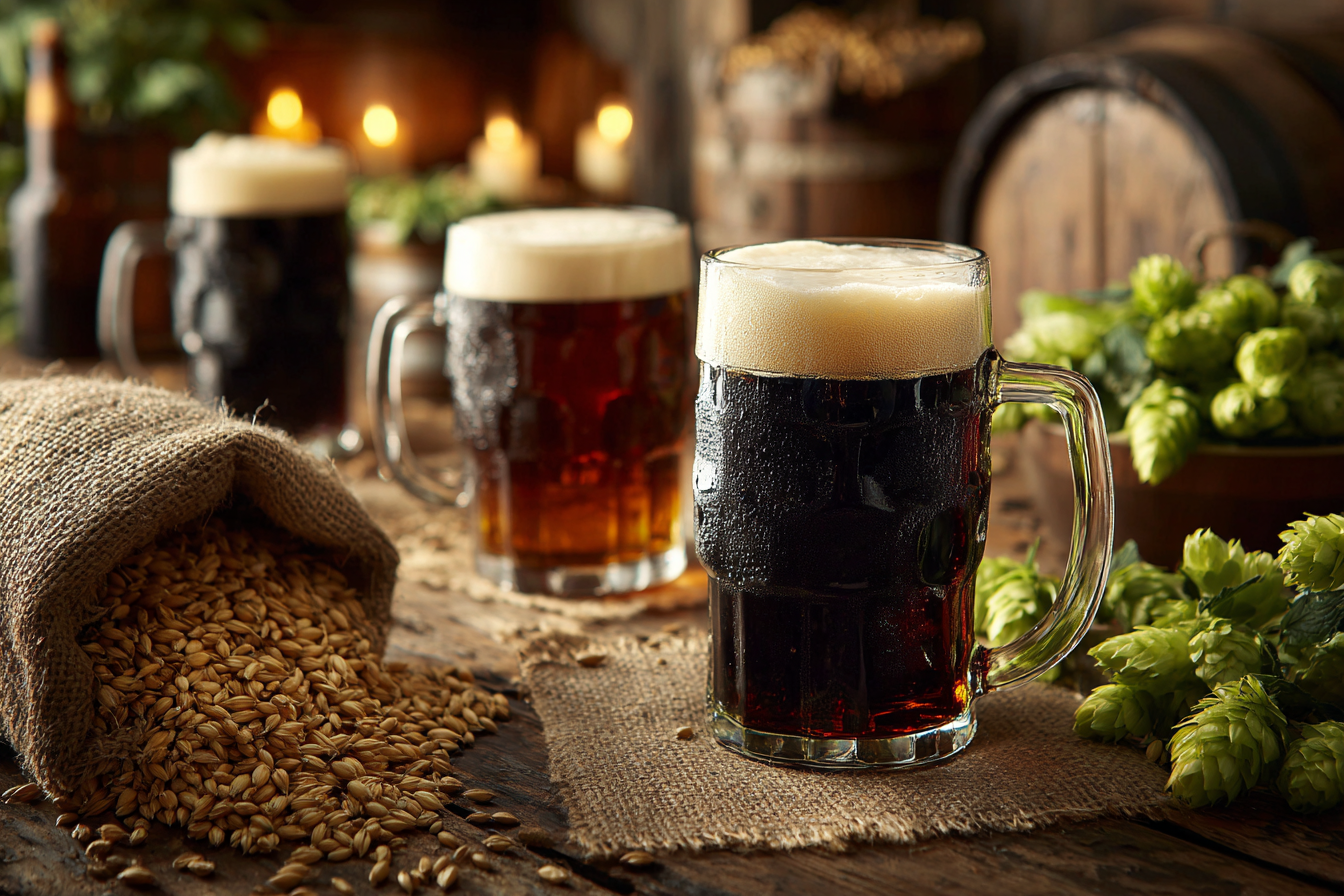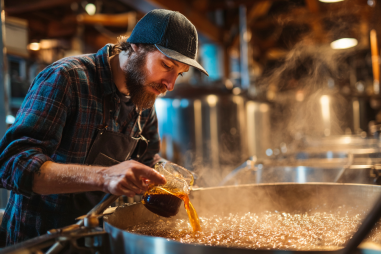Ever found yourself captivated by the deep, complex flavors of a tropical stout and wondered how brewers achieve that perfect balance of boldness and tropical charm? Tropical stout brewing is a fascinating process that seamlessly blends traditional stout elements with tropical influences to create a unique and flavorful beer experience. Whether you’re a brewing enthusiast or just curious about this enticing beer style, this guide will walk you through the entire tropical stout brewing process, revealing the secrets behind its rich character and robust flavor profile.
Introduction to Tropical Stout
Tropical stout is a distinctive style of stout that originates from tropical regions, notably parts of the Caribbean and Africa, where stouts have been brewed with a local twist. Unlike typical dry or sweet stouts, tropical stouts often feature a fuller body and subtly integrated tropical flavors that enhance the traditional roasted bitterness without overpowering it. This creates a complex beer that showcases dark roasted malts alongside hints of fruitiness, cocoa, and even spices, often evoking aromas and tastes reminiscent of tropical cacao, coffee, or ripe fruits.
This beer style is popular in countries such as Jamaica and Nigeria, where the climatic influences have historically shaped its ingredients and brewing methods. Its robust nature helps tropical stouts stand up well in warm weather and makes them exceptionally rewarding to sip slowly, appreciating the layers of flavor.
Key Ingredients Used in Tropical Stout Brewing
The ingredients for tropical stout are carefully selected to balance bold malt flavors with subtle tropical notes. Here are the primary components:
- Malted Barley: The backbone of any stout, malted barley provides essential sugars and depth of flavor. For tropical stouts, brewers often use a blend of Pale malts and Specialty malts including Chocolate, Black Patent, and Roasted Barley to achieve a dark color and characteristic roasted flavors.
- Adjuncts and Specialty Grains: Some tropical stouts may incorporate adjuncts such as flaked maize or caramel malts to add sweetness, body, and complexity. Maize can lighten the body slightly and emphasize the malt sweetness to fit the tropical taste palate.
- Hops: Typically, mild hopping is preferred to avoid overshadowing the malt and tropical notes. Traditional English hop varieties like Fuggle or East Kent Goldings are common, providing a subtle bitterness and earthy aroma.
- Yeast: Ale yeast strains that ferment cleanly but produce some fruity esters are ideal. The yeast character plays a notable role in complementing the tropical flavors without competing with the roasted malt character.
- Additional Flavor Contributors: Some brewers carefully add natural flavors such as dried tropical fruits, cacao nibs, coffee beans, or spices like cinnamon and nutmeg to deepen the complexity and highlight tropical elements.
- Water: The mineral content of water impacts the final profile. Balanced water chemistry with moderate sulfate and calcium is preferred for enhancing malt flavors.
Step-by-Step Brewing Process
Brewing a tropical stout is both an art and a science. Here is a step-by-step breakdown to help you understand how this flavorful beer comes to life.
Mashing
The process begins with mashing, where crushed malted barley and any adjunct grains are mixed with hot water, typically between 65°C and 68°C (149°F – 154°F). This activates enzymes that convert starches into fermentable sugars, creating a sweet wort with a rich malt foundation. For tropical stouts, the mash is often slightly longer to fully extract deep, roasted flavors from specialty malts.
Lautering and Sparging
After mashing, the sweet wort is separated from the spent grains through lautering. Then, sparging rinses remaining sugars from the grains with additional hot water. This step ensures optimal sugar extraction and clarity of the wort.
Boiling
The wort is boiled, usually for 60 to 90 minutes. This stage sterilizes the wort and concentrates the flavors. Hops are added during the boil, but in tropical stout brewing, hopping is moderate to keep bitterness balanced. Brewers may add specialty ingredients such as dried fruit, cacao nibs, or spices toward the end of the boil or during whirlpool to retain volatile flavors.
Cooling
Post-boil, the wort is quickly cooled to yeast fermentation temperatures, generally around 18°C to 22°C (64°F – 72°F). Rapid cooling prevents contamination and improves clarity.
Fermentation Specifics for Tropical Stout
Fermentation is where much of the magic happens. The cooled wort is transferred to a fermenter and pitched with ale yeast. During fermentation, yeast converts sugars into alcohol, carbon dioxide, and a variety of flavor compounds.
For tropical stout, a yeast strain that produces mild fruity esters is often favored, adding subtle tropical fruit notes that harmonize with the malt. Fermentation typically lasts one to two weeks, with temperatures carefully controlled to balance ester production without generating off-flavors. Some brewers employ a secondary fermentation to further develop flavor complexity and reduce harshness.
Aging and Conditioning Techniques
Aging is a crucial phase that allows flavors to meld and mellow. Tropical stouts benefit from a period of maturation that can last from several weeks to months, depending on the recipe and desired profile.
During conditioning, the beer’s robust roasted flavors soften and harmonize with fruity and spicy notes, while unwanted astringency diminishes. Brewers may age tropical stouts in neutral barrels or stainless steel tanks, sometimes introducing small amounts of wood chips or oak spirals infused with spices or cocoa for complexity.
Carbonation levels for tropical stouts tend to be moderate, supporting a smooth mouthfeel that enhances drinkability without sacrificing body.
Common Flavor Notes Developed During Brewing
The tropical stout brewing process crafts a wide range of flavor notes that make this beer style stand out. Typical flavors you can expect include:
- Roasted Malt: Intense coffee, dark chocolate, and burnt toast are foundational flavors imparted by roasted barley and specialty malts.
- Dark Fruits: Notes of raisin, fig, or plum can emerge naturally from yeast esters or malt character, complementing the tropical profile.
- Tropical Fruits: Subtle hints of banana, pineapple, mango, or citrus zest often come from yeast activity or complementary additions to the beer.
- Spices: Occasional undertones of cinnamon, clove, or nutmeg add warming layers to the flavor profile, especially in versions spiced by brewers.
- Cocoa and Coffee: Dark chocolate and espresso-like bitterness are signature notes, adding depth and balancing sweetness.
- Sweetness and Maltiness: A well-rounded malt sweetness underpins the beer, enhancing the overall mouthfeel and richness.
Tips for Homebrewers Interested in Tropical Stout
If you’re a homebrewer excited to try your hand at a tropical stout, consider these practical tips:
- Use Quality Specialty Malts: Invest in a variety of roasted and caramel malts to experiment with depth and flavor complexity.
- Control Fermentation Temperature: Keep a close eye on fermentation temperatures to maintain yeast health and prevent off-flavors.
- Consider Adjuncts Thoughtfully: Adding small amounts of dried tropical fruits, cacao nibs, or coffee beans can elevate your stout, but balance is key.
- Experiment with Yeast Strains: Try different ale yeasts to find the ester profile that complements your recipe best.
- Patience in Aging: Allow your stout adequate time to condition, as rushing this can result in harsh or unbalanced flavors.
- Water Chemistry: Adjust your brewing water if possible to enhance maltiness and reduce harsh bitterness.
- Keep Detailed Notes: Document your process and modifications to refine your recipe with each batch.
By following these tips and embracing the unique characteristics of tropical stout brewing, homebrewers can create richly flavored beers that capture this style’s bold spirit and complexity.
The Art Behind Tropical Stout Brewing
Brewing tropical stout is a rewarding journey that combines tradition, science, and creativity. The process demands attention to detail—from selecting malts and adjuncts to carefully managing fermentation and aging—but the results offer a beer that is as rich in flavor as it is in history. Tropical stouts embody a harmonious blend of roasted malt intensity and exotic tropical nuances, making each sip a unique and satisfying experience.
Whether enjoyed in a sunlit setting or cozy evening, tropical stout invites drinkers to appreciate the craftsmanship and culture behind every pour. For brewers, mastering this style means embracing complexity and boldly melding flavors to craft a beer that tells a story of its tropical roots and brewing artistry.







